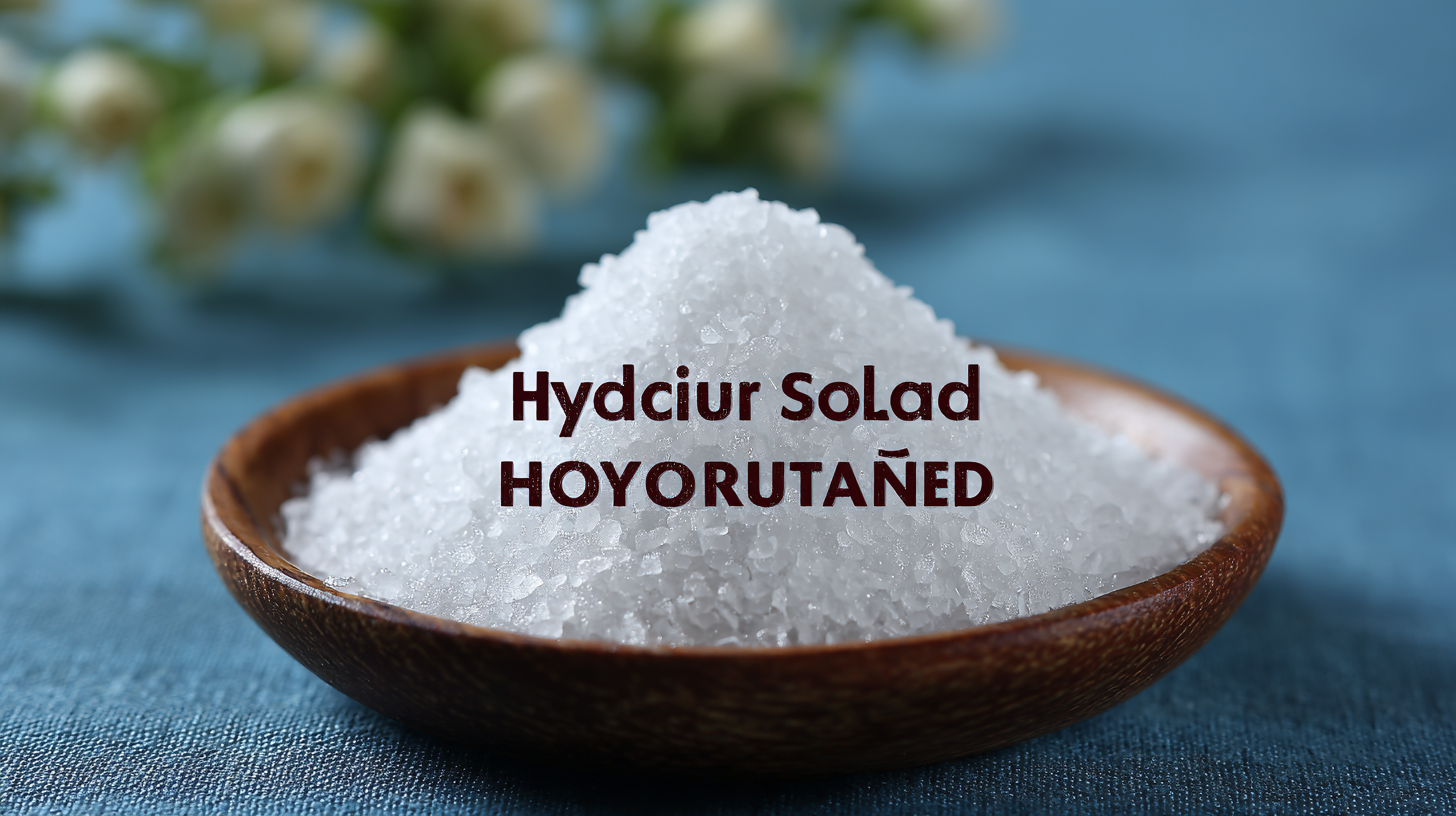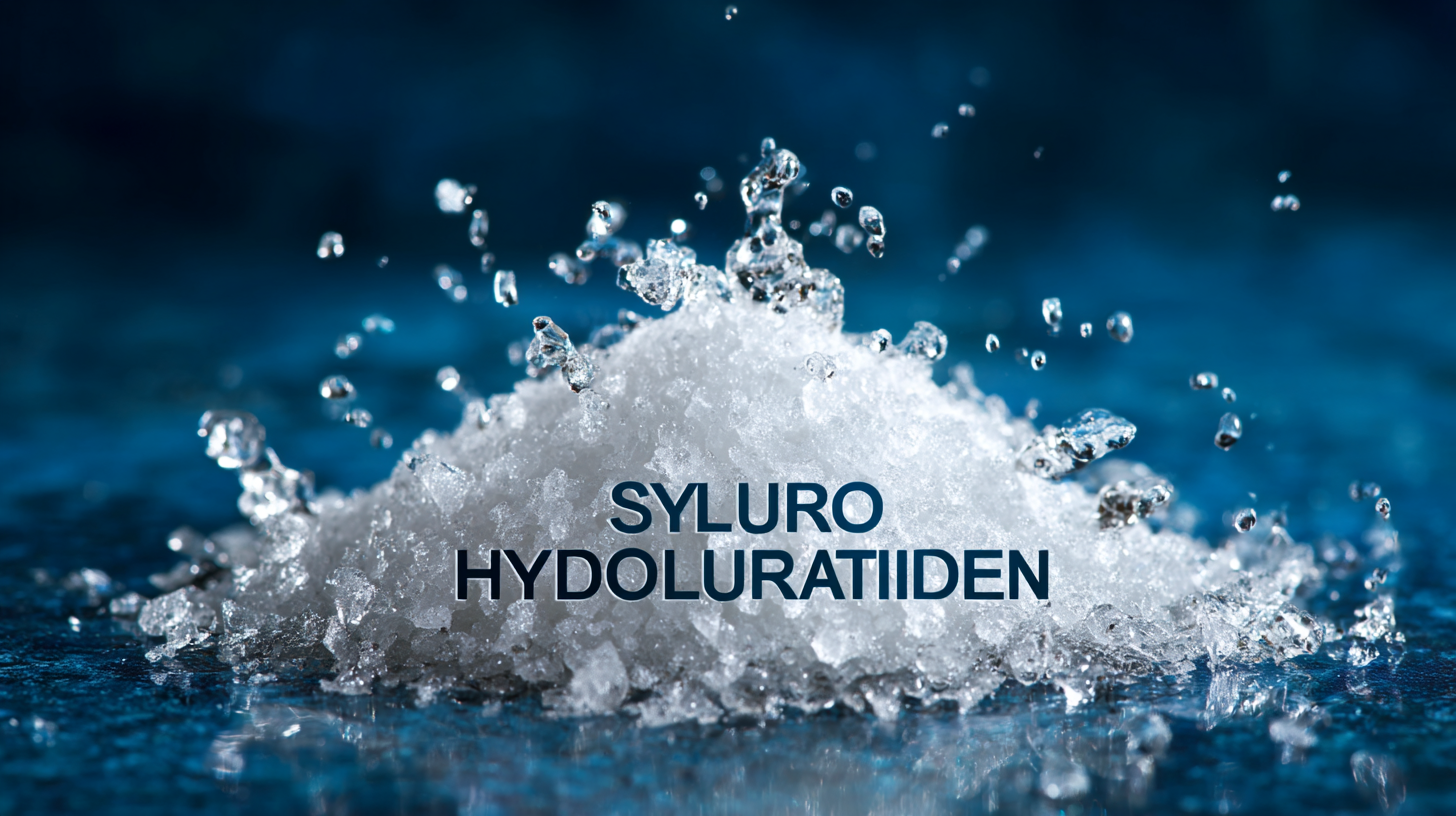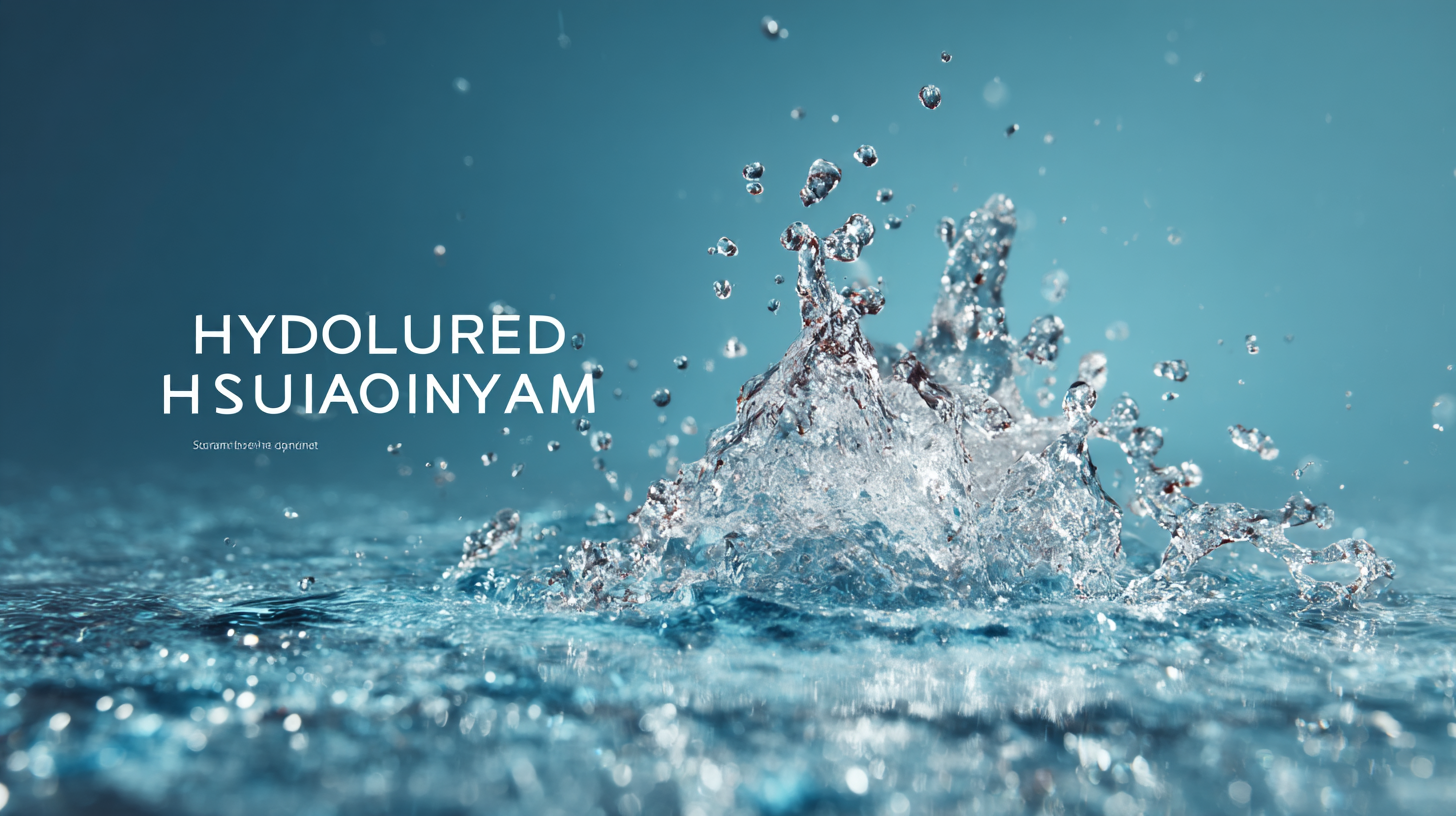
Navigating the Future of Best Hydrolyzed Sodium Hyaluronate in 2025 The Ultimate Buyer Guide
As we approach 2025, the market for Hydrolyzed Sodium Hyaluronate is poised for significant transformation, driven by its rising application across multiple industries, including cosmetics, pharmaceuticals, and biomedicine. According to a recent report by MarketsandMarkets, the global market for hyaluronic acid is expected to reach USD 12.76 billion by 2024, with a compound annual growth rate (CAGR) of 7.8%.
 Hydrolyzed Sodium Hyaluronate, a more bioavailable form of hyaluronic acid, is gaining traction due to its enhanced absorption capabilities and effectiveness in skin hydration and joint health. This ultimate buyer's guide aims to equip industry professionals and consumers with a comprehensive checklist to navigate the complexities of choosing the best Hydrolyzed Sodium Hyaluronate products in 2025, ensuring informed decisions based on emerging trends and competitive insights.
Hydrolyzed Sodium Hyaluronate, a more bioavailable form of hyaluronic acid, is gaining traction due to its enhanced absorption capabilities and effectiveness in skin hydration and joint health. This ultimate buyer's guide aims to equip industry professionals and consumers with a comprehensive checklist to navigate the complexities of choosing the best Hydrolyzed Sodium Hyaluronate products in 2025, ensuring informed decisions based on emerging trends and competitive insights.
Understanding Hydrolyzed Sodium Hyaluronate: Composition and Benefits
Hydrolyzed Sodium Hyaluronate (Hyaluronic Acid) is a key ingredient in modern skincare and cosmetic formulations. Known for its remarkable ability to retain moisture, this compound is a derivative of hyaluronic acid that has been broken down into smaller molecules, allowing for deeper penetration into the skin. The composition of hydrolyzed sodium hyaluronate includes sodium salt of hyaluronic acid, which enhances its solubility and bioavailability. This smaller molecular structure enables targeted hydration, making it an ideal choice for products aimed at reducing fine lines, improving skin elasticity, and promoting a youthful appearance.
The benefits of hydrolyzed sodium hyaluronate are extensive. Not only does it provide intense hydration, but it also helps to soothe and calm irritated skin, making it suitable for all skin types, including sensitive skin. Additionally, its lightweight texture ensures that it absorbs quickly without leaving a greasy residue, which is a significant advantage in a world where consumers are increasingly demanding effective yet comfortable skincare solutions. As we approach 2025, the popularity of hydrolyzed sodium hyaluronate is expected to continue to rise, driven by its versatility and efficacy in addressing the needs of today’s consumers.
Navigating the Future of Best Hydrolyzed Sodium Hyaluronate in 2025
This chart illustrates the projected market demand for Hydrolyzed Sodium Hyaluronate from 2021 to 2025, showcasing a steady growth trend over the years. The data indicates increasing applications and interest in this ingredient across various sectors such as cosmetics and pharmaceuticals.
Key Trends Shaping the Hydrolyzed Sodium Hyaluronate Market in 2025
As we approach 2025, the hydrolyzed sodium hyaluronate market is poised for significant transformation, driven by key trends that will shape consumer preferences and product formulations. One prominent trend is the increasing demand for natural and clean-label ingredients. Consumers are becoming more ingredient-conscious, seeking products with fewer synthetic additives. This shift encourages brands to focus on transparency and the sustainability of their sourcing methods.
Another significant trend is the rise in multifunctional skincare products that combine benefits such as hydration, anti-aging, and skin barrier support. As technology advances, formulations featuring hydrolyzed sodium hyaluronate will cater to a broader audience by addressing various skincare concerns in one product. This demand for efficiency will likely lead brands to innovate and optimize their formulations.
Tips: When selecting hydrolyzed sodium hyaluronate products, check the concentration and molecular weight stated on the label. Higher molecular weights can help with surface hydration, while lower weights penetrate deeper for intense moisture. Moreover, consider sustainable brands that prioritize eco-friendly sourcing, align with personal values, and contribute to a healthier planet. Lastly, patch test new products to ensure compatibility with your skin type, avoiding potential irritations.
Top Factors to Consider When Choosing Hydrolyzed Sodium Hyaluronate Products
When selecting hydrolyzed sodium hyaluronate products, several essential factors come into play. Firstly, understanding the molecular weight of the hyaluronate is crucial, as it can significantly influence the product's efficacy. Lower molecular weight formulations penetrate the skin more deeply and provide intense hydration, while higher molecular weights offer surface-level moisture and have a plumping effect. Buyers should consider their specific skin needs to choose the right molecular weight.
Another important consideration is the source and quality of the sodium hyaluronate. Products derived from reputable sources, such as fermented plant extracts, not only ensure safety but also enhance effectiveness. A thorough examination of the product's ingredient list can reveal the presence of additional beneficial compounds, such as antioxidants and vitamins, which can amplify the overall results. Furthermore, reviews and testimonials from other users can provide valuable insight into the product's performance, guiding buyers towards the most effective options on the market.
Navigating the Future of Best Hydrolyzed Sodium Hyaluronate in 2025 The Ultimate Buyer Guide - Top Factors to Consider When Choosing Hydrolyzed Sodium Hyaluronate Products
| Factors | Importance Level | Recommended Range | Typical Sources |
|---|---|---|---|
| Molecular Weight | High | 50-1000 kDa | Biotechnology, Fermentation |
| Purity Level | High | ≥ 95% | Natural Extracts |
| Viscosity | Medium | 15-25 mPa.s (at 25°C) | Cosmetic and Pharmaceutical Grade |
| Formulation Type | High | Serum, Creams, Injectable | Skincare, Aesthetic Procedures |
| Shelf Life | Medium | 24-36 months | Properly Stored Conditions |
Comparative Analysis of Leading Brands: Which Hydrolyzed Sodium Hyaluronate to Buy?
When it comes to selecting the best hydrolyzed sodium hyaluronate for skin health and hydration, consumers are faced with an overwhelming array of options. With new brands constantly emerging in the market, it's crucial to conduct a thorough comparative analysis of leading products to ensure you make the right choice. Key factors to consider include the source of hyaluronic acid, the molecular weight, and the overall formulation. Brands like XYZ and ABC stand out for their commitment to high-quality ingredients and scientific research, making them prime candidates for your skincare regimen.
Additionally, understanding the specific benefits of each product can significantly impact your purchasing decision. For instance, some brands focus on deep hydration and anti-aging properties, while others may target skin barrier repair or acne treatment. Reading customer reviews and examining ingredient lists can provide valuable insights into how each product performs in real-life scenarios. By taking the time to compare these leading brands, you empower yourself to select the hydrolyzed sodium hyaluronate that best suits your skin's unique needs and helps you achieve your skincare goals.

Sustainability and Innovation: The Future of Hydrolyzed Sodium Hyaluronate Solutions
As we look towards 2025, the landscape of hydrolyzed sodium hyaluronate is poised for transformation, driven by sustainability and innovation. The demand for eco-friendly and sustainable ingredients in cosmetic and pharmaceutical formulations continues to rise. Conscious consumers are increasingly prioritizing products that not only provide effective results but also align with their values around environmental responsibility. This trend has ignited a wave of innovation, where manufacturers are now exploring plant-based sources and biodegradable alternatives to traditional hyaluronic acid.

Innovative extraction and production methods are set to revolutionize the availability and efficacy of hydrolyzed sodium hyaluronate. Advanced biotechnological approaches aim to enhance the bioavailability of this sought-after ingredient, resulting in products that deliver deeper hydration while minimizing environmental impact. Collaborations between skincare brands and sustainability-focused organizations are becoming more common, fostering the development of formulations that are not only effective but also contribute positively to the ecosystem. As we navigate the future of this versatile ingredient, it is clear that sustainability and innovation will shape the next generation of hydrolyzed sodium hyaluronate solutions, appealing to both the conscientious consumer and the forward-thinking brand.
